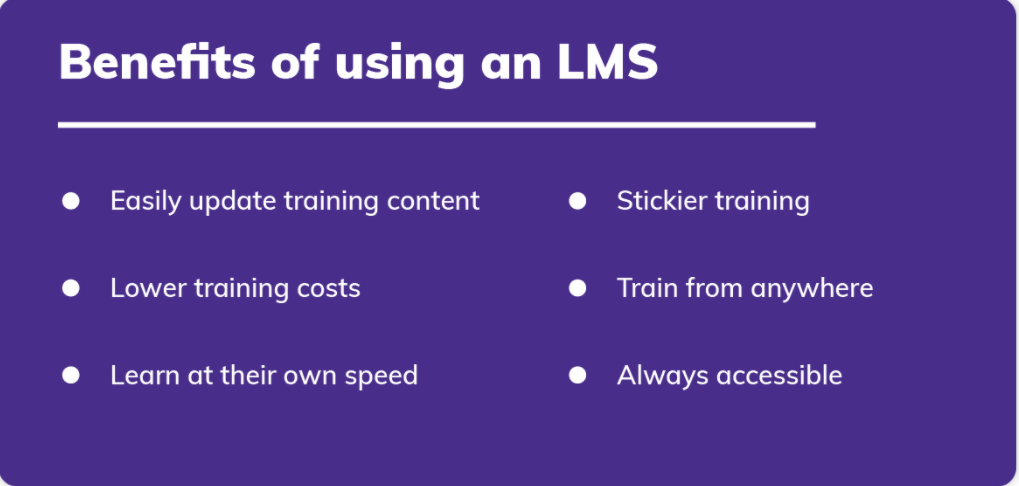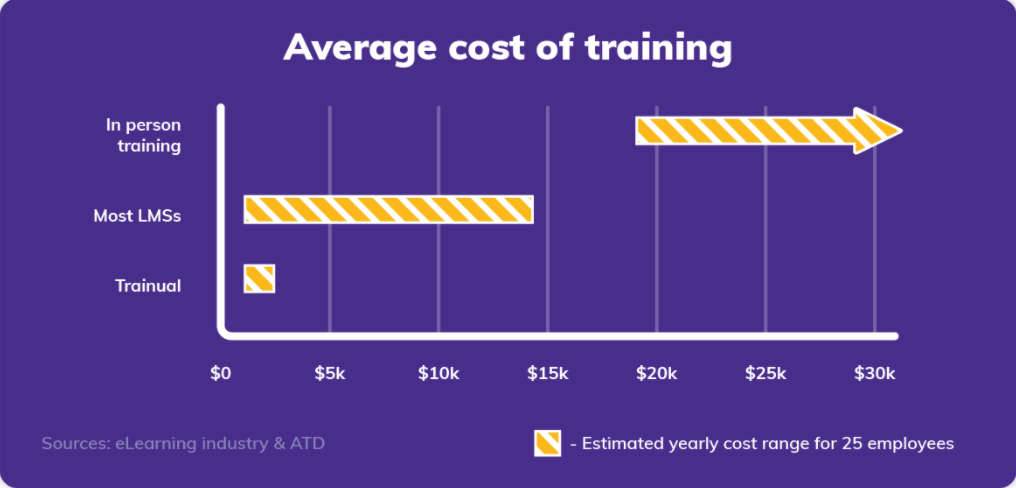
Articles
Remote Worker Training Is More Important Than Ever in 2022
March 29, 2022

When it comes to the future of work, remote training — online synchronous, asynchronous, or hybrid learning and development for your employees — is quickly becoming an essential part of doing business.
Before the pandemic, companies were already beginning to see the advantages of offering flexible work arrangements for their team. From improved morale to better engagement, remote training is a must-have and can be leveraged to the benefit of both your trainees and your seasoned team members.
Not sure how remote training works or how to start? This guide will set you up with everything you need to know before diving into the ins and outs of developing a remote training program.
We’ll cover the benefits, resources you’ll need to make it happen, and basic steps you can take to level up your team’s training.
What are the benefits of remote worker training?
If you're still hiring a professional trainer or booking flights and hotel accommodations for your team’s weekend training — it's time to rethink your training program. And forget printing off thousands of worksheet copies!
Remote employee training can fit into just about anyone’s schedule — it’s also affordable. Let’s take a closer look at the top benefits of switching to remote training.
It makes learning accessible and convenient.
No need to block off the conference room every day or book the meeting center at a local hotel to accommodate your entire team — remote training can be done anywhere and at any time.
Since training and learning and development (L&D) may need to happen multiple times per year, remote training is an affordable model that can jive with a variety of schedules.
Regardless of timezone or the number of employees who require training, the convenience speaks for itself. So long as everyone can log in/enter the training, you’re golden (more about the different ways to deliver training later on in our guide).
It keeps everyone on the same page.
With in-person training, consistency can be a problem. Picture this — you have 150 employees who need training. So, you split everyone into three groups. Group A will train on Monday and Tuesday. Group B on Wednesday and Thursday. And Group C on Friday and Saturday.
Let’s say Group B goes off on an (important) tangent about best practices in their training. That wasn’t on the agenda, of course. But everyone benefitted. That’s great… for Group B. Now you need to find a way to document and deliver that information for Groups A and C to ensure everyone’s on the same page.
With remote training, you don’t have to worry about that. Every team member will have access to the same training materials and modules, and they’ll likely have access to recorded webinars if they can’t log in at the same time as everyone else.
The result? Nobody misses out, and everyone benefits from access to the same information.
It boosts employee morale and company culture.
A team that trains together, stays engaged together.
Remote training can be as creative and interactive as you want it to be. With countless technologies, activities, and communication tools at your disposal, your team will experience far more opportunities to learn from one another than by sitting in a conference room staring at a slideshow presentation.
.gif)
Here are some of the best ways to boost your employees’ morale and company culture during remote training:
- Create team tasks where each member needs to think collectively to solve a simulated problem or exercise.
- Don’t forget about incentives! While training may be mandatory, incentives can be a great optional element.
- Get creative with the training modules. Use a blended delivery model — a combo of asynchronous and synchronous activities.
- Consider incorporating augmented reality (AR) to boost learning and comprehension.
- Use virtual reality (VR) when your employees need to practice soft skills like active listening.
- Hop on the gamification train. Training doesn’t need to be rote or under-stimulating.
It improves communication and collaboration.
When you move beyond a conference room with basic presentation equipment, and into remote training, the technological possibilities are endless. There are numerous ways to promote better communication and collaboration.
When employees can engage one another through a variety of brainstorming activities, breakout sessions, and team exercises, their morale can improve, which can only mean positive things for your work culture, in general.
You want to create an e-culture of collaboration. In short, it’s critical for team morale, productivity, and your bottom line.
And that starts with democratizing knowledge/materials so that every trainee has what they need when they need it. A Learning Management System (LMS) can help you streamline your training materials, making them accessible to everyone.

Or, you can use an LMS alternative. Not only are they far more cost-effective, but you can track and monitor where your employees are in the training process.
It saves time, money, and other resources.
When you revisit your past training budgets, which line items are pain points?
Hotel rooms and flights for 150 employees? Per diem reimbursement? Maybe a professional trainer or motivational speaker fee? Printing costs? And that’s not even factoring in the hours it took to book all of the above.
On average, remote training costs significantly less than in-person training, especially if you’re using an LMS alternative.

Essential toolkit for your remote training process
While every company and team requires different tools and considerations for training, here are some of the most common questions/points to keep in mind:
- Know your trainees’ learning styles. Visual learners? Practical/hands-on? A combo?
- Determine which learning model will best suit your team (asynchronous, synchronous, or a blended model).
- Don’t shy away from technology that will aid in collaboration and team building.
- Decide whether a Learning Management System will work for your team.
- Prepare your learning materials (reference materials, webinars, e-learning courses, presentations, videos, assessments, and more).
How to get started with remote training
Step 1: Synchronous, asynchronous, or hybrid? Choose your mode of delivery.
When you know your team well, you know what does and doesn’t work when it comes to training. Solicit their feedback by conducting a survey. Let them tell you about their learning style.
Maybe most of them would prefer a simple approach, like training materials and quiz assessments.
Others may want hands-on simulations to practice the theories and skills they’re learning. Let’s explore what synchronous, asynchronous, and blended learning models are, and the benefits and differences between these types of training.
Synchronous training
Synchronous training (AKA, instructor-led training) occurs when all of your trainees are learning simultaneously, in real time.
Take, for instance, a live teaching session or webinar that you’re facilitating. Your team will be attending at the same time, during a designated time slot.
As you can imagine, this model doesn’t always sync with everyone’s schedules. If you do adopt this model, you’ll want to offer a recorded session for those who can’t attend at the designated time.
Benefits
- Promotes active engagement and real-time discussion.
- Ideal for cross-department collaboration opportunities.
- Creates consistency in the training experience.
- Training is time-sensitive — everyone gets what they need at the same time.
Asynchronous training
Asynchronous training (AKA, “self-led online learning”), on the other hand, is where your trainees can complete their training on their own, at any time, and in any place.
For asynchronous training to be effective, it’s vital to document your processes and best practices. Doing this will allow you to forgo explaining the same concept over and over again.
Benefits
- You’ll witness consistency since everyone is learning the same material, the same way.
- It’s a time saver since your trainees will have the answers they need at their fingertips. Everything they’ll need to know will be documented.
- Your trainees will set their own learning pace, which means they’ll retain the information longer.
Blended/hybrid training
Blended or hybrid remote training takes the best of both the synchronous and asynchronous models.
You can pick and choose what will work for your team, making your training customizable and unique to your team’s needs.
Step 2: Invest in your training arsenal.
While it’s technically possible to use the conferencing capabilities of Skype, the messaging features of Slack, and a few PowerPoint presentations to meet your training needs, the real question is: why make the remote training process so complicated (and outdated)?
Instead, have your employees complete their training on a single platform, where everyone has access to the same material any time they want.
That’s where a Learning Management System (LMS) or an LMS alternative can simplify your training life.
Step 3: Create your training materials.
The world is your oyster when it comes to creating the training materials that will set your team up for success.
From augmented reality (AR), virtual reality (VR), to countless other tools that will engage your trainees, as you gather the information your team needs to know, keep this word in mind — engagement.
It’s no secret that training can be pretty yawn-inducing.
So, as you begin creating your training materials, ask yourself how you can best deliver content so that your trainees stay engaged and retain the information.
Opportunities for active and simulated learning are one way of doing this. That’s where VR can potentially come into play — literally. Your team can practice what they’re doing in the comfort and safety of their home.
Because of its immersive nature, VR will allow your trainees to engage, collaborate, and retain the material on a deeper level.
Step 4: Train your team!
Just because you have all of your training materials in one place, and your trainees have what they need, doesn’t mean you should disengage from the process. There are plenty of opportunities and tools available to facilitate their training and collaboration.
You could try a quasi-flipped training experience by allowing your veteran employees to teach different parts of the material. Not only is this empowering for your employees, but it can help them develop their leadership skills.
Or, you can spice up the process with collaborative group exercises. Here, they’ll need to effectively communicate to work through a simulation or exercise.
If you choose to utilize collaborative exercises, offer incentives that can create friendly rivalry — and stronger work culture.
For instance, the group that comes up with the most affordable out-of-the-box solution to the problem in the simulation could win a group dining experience or a virtual happy hour that you can reimburse, up to a certain amount per person.
Step 5: Hold your trainees accountable and measure their success.
Want to know how each trainee is coming along with their training process? Accountability is key.
You need assurance that they’re retaining the training information and that they can apply it to several practical scenarios.

By using an LMS or LMS-alternative, you have the opportunity to incorporate assessments at any stage of the training process. You can choose how you test your trainees and how often you feel it’s necessary.
At the end of a remote training session, you’ll be privy to numerous metrics that will show you what’s working and what isn’t. Maybe one of the training modules took your trainees double the time to complete than you had anticipated. Or, a few modules contained outdated policies or recommended approaches.
Seek feedback from your trainees. Gauge what they liked and what they didn’t. Remember to remain open to improvement.
Ready to level up your remote worker training?
Remote worker training is convenient, trackable, and cost-effective. With remote working on the rise and work-life balance in high demand, remote training is a win-win for you and your team.
It’s important to create an automated and streamlined training process for your employees. Whether they’re onboarding or in need of continuing L&D, you need everyone on the same page.
Creating a convenient, consistent, and collaborative remote training experience will equip them with everything they need to grow in their position. And that results in content, engaged, and productive team members who you’re more likely to retain in the long run.
Similar Blog Posts










